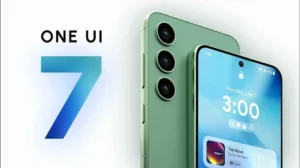Qualcomm is shutting down Snapdragon Satellite, its answer to Apple’s Emergency SOS via satellite feature. The company had partnered with Iridium Communications to develop the feature, but it has now decided to scrap the project.
Key Highlights:
- Qualcomm is shutting down Snapdragon Satellite, its answer to Apple’s Emergency SOS via satellite feature.
- Snapdragon Satellite was announced in January 2023 in partnership with Iridium Communications.
- The feature would have allowed Android phones to connect to satellites in areas with no cellular or Wi-Fi coverage.
- Qualcomm has not given a reason for shutting down the project, but it is likely due to the high cost of developing and deploying the technology.

Snapdragon Satellite was announced in January 2023 and was supposed to be available on Android phones in 2024. It would have allowed users to send and receive text messages and share their location with emergency services via satellite, even in areas with no cellular or Wi-Fi coverage.
Qualcomm has not given a reason for shutting down the project, but it is likely due to the high cost of developing and deploying the technology. Satellite communications are still relatively expensive, and Qualcomm would have needed to subsidize the cost of Snapdragon Satellite in order to make it affordable for phone makers and consumers.
In addition to the cost, Qualcomm may have also been concerned about the competition from Apple. Apple’s Emergency SOS via satellite feature is already available on the iPhone 14 lineup, and it is a major selling point for the device. Qualcomm may have decided that it could not compete with Apple, and that it was better to focus on other technologies.
The shutdown of Snapdragon Satellite is a setback for Android users. Emergency SOS via satellite is a potentially life-saving feature, and it is a shame that it will not be available on Android phones in the near future.
Analysis:
The shutdown of Snapdragon Satellite is a blow to Android users, who were hoping to have a similar emergency SOS via satellite feature as the iPhone 14 lineup. However, it is important to note that Qualcomm is not the only company working on satellite communications for mobile phones.
Other companies, such as Lynk and AST SpaceMobile, are also developing satellite communication technologies for mobile phones. These companies are planning to launch satellite networks that will provide global coverage, even in areas with no cellular or Wi-Fi service.
It is possible that one of these companies will be able to develop a satellite communication technology for mobile phones that is more affordable and efficient than Snapdragon Satellite. If so, then Android users may still be able to get a similar emergency SOS via satellite feature in the future.
The shutdown of Snapdragon Satellite is a setback for Android users, but it is not the end of the world. Other companies are still working on satellite communications for mobile phones, and it is possible that one of these companies will be able to develop a more affordable and efficient technology than Snapdragon Satellite.

















